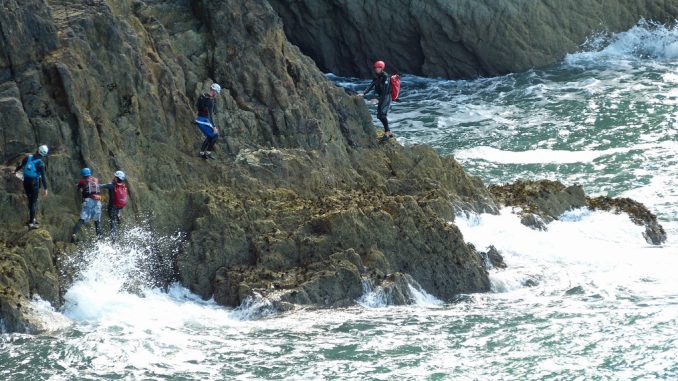
Coasteering blends scrambling, swimming, and cliff jumping into one exhilarating coastal adventure. It’s perfect for anyone craving a mix of rock-hopping thrills and crystal-clear sea dips. In this guide, you’ll discover what coasteering entails, how to stay safe, and where to explore the best routes across Britain. Lace up your wetsuit—we’re diving in!
What Is Coasteering?
Coasteering is a hands-on way to explore the intertidal zone by moving along the shoreline’s natural features. You’ll scramble over rocky ledges, swim through hidden coves, and leap from safe cliff platforms. Unlike sea kayaking or paddleboarding, coasteering keeps you in direct contact with the water and terrain, offering an immersive way to experience coastal geology and marine life.
Essential Safety Gear for Coasteering in the UK
Before you hit the rocks, kit yourself out with specialist equipment. A sturdy wetsuit with reinforced knees and elbows keeps you warm and protected. Buoyancy aids or a buoyancy vest help you float in choppy water. Wear a helmet designed for water sports to guard against scrapes and bumps. Finally, add grippy neoprene boots for stable footing on slippery surfaces.
Skills and Techniques to Master
Balance and coordination are your coasteering lifelines. Practice edging—leaning into the rock face to maintain traction—before launching off small drops. Learn basic swim techniques for tidal currents, and always scout jump spots from shore to gauge depth and underwater hazards. Communication with your group is key: agree on hand signals and maintain visual contact at all times.
Top Coasteering in the UK Locations
- Pembrokeshire, Wales: Famous for sea caves and dramatic cliff jumps at St. Govans.
- Isle of Skye, Scotland: Rugged coves and hidden inlets around Elgol.
- Dorset Jurassic Coast: Explore fossil-strewn ledges near Lulworth Cove.
- Cornwall’s North Coast: Epic rock formations and tidal pools at Boscastle.
- Antrim Coast, Northern Ireland: Coastal arches and basalt columns near Ballintoy.
Each spot offers varied difficulty levels, so beginners can find gentler bays while thrill-seekers tackle higher jumps.
Guided Tours vs. DIY Adventures
Joining a guided coasteering tour brings expert leadership, safety briefings, and local insider knowledge. Many operators supply all kit and tailor routes to your skill level. If you’re experienced and confident in navigation, a DIY trip lets you choose your own pace—just ensure you’ve done thorough tide and weather research. Regardless of format, never go solo: always travel with at least one partner.
Environmental Considerations and Leave No Trace
Coasteering takes you through sensitive coastal ecosystems. Stick to durable rock surfaces, avoid disturbing nesting birds, and never harass marine life. Pack out all litter and use reef-safe sunscreen to protect underwater habitats. By following Leave No Trace principles, you’ll help preserve these wild shorelines for future adventurers.
Conclusion and Next Steps
Coasteering in the UK combines physical challenge, scenic variety, and a strong dose of adrenaline. With the right gear, skills, and respect for the environment, it’s accessible for beginners and seasoned explorers alike. Ready to start planning? Book a guided session or gather your group for a DIY sortie—just remember to pick a location that matches your comfort level. Get out there and make waves!
